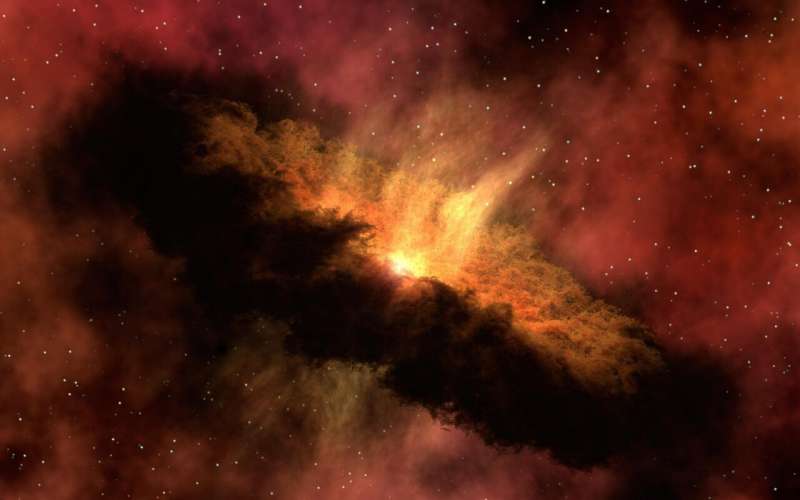Science
Related: About this forumAstrophysicist explains science behind once-in-a-lifetime nova outburst that will light up the sky this year
MARCH 19, 2024
Editors' notes
by Cody Mello-Klein, Northeastern University

Credit: Pixabay/CC0 Public Domain
The total solar eclipse isn't the only reason to keep your eyes to the sky this year. For the first time in 80 years, a star system 3,000 light years away will be visible to the naked eye thanks to a once-in-a-lifetime nova outburst.
NASA announced that the nova, which will create a "new" star in the night sky, will light up the night sky some time between now and September and be as bright as the North Star. One of only five recurring novae in our galaxy, it will be visible for a week before it fades back down.
Jonathan Blazek, an assistant professor of physics at Northeastern University, says this is an exciting moment for amateur astronomers and astrophysicists alike. It's not technically a new star, just a star that is now bright enough for people to see more clearly, Blazek says, but it provides an opportunity to see and understand the cosmos in a new way.
What exactly is a nova?
"There's a broad class of these sorts of events, and they typically share the trait of having two objects, or sometimes more than two objects, close to each other, and you're transferring mass from one to the other," Blazek says. "Eventually, you build up enough mass on usually the hotter object that it ignites, in this case undergoing fusion, and then suddenly you get a very rapid release of energy so it gets much, much brighter."
The star system in question is T Coronae Borealis, or T CrB, and it contains a white dwarf and red giant, two stars that create the perfect conditions for a nova outburst.
More:
https://phys.org/news/2024-03-astrophysicist-science-lifetime-nova-outburst.html
StarryNite
(9,460 posts)Thank you for posting.
orleans
(34,073 posts)IrishAfricanAmerican
(3,818 posts)Will you be home?
![]()
Easterncedar
(2,328 posts)Read the article twice and am left with lots of questions. Lots going on in the sky this year!
eppur_se_muova
(36,292 posts)
https://en.wikipedia.org/wiki/T_Coronae_Borealis
Not to be confused with ? (tau) Coronae Borealis.
Hmmmm ... all of a sudden Greek characters are not showing properly. In 'Preview', I see a proper tau, but after posting it's replaced by a question mark.
Easterncedar
(2,328 posts)That helps a lot. The Corona Borealis is one I can find easily enough. I can hope to see the nova now.
Igel
(35,359 posts)Today, variable stars are catalogued in a few slightly different ways according to their order of discovery. The first variable to be discovered in each constellation was assigned the letter R and the Latin genitive of the constellation name, such as R Andromedae. The second discovered variable is dubbed S, continuing in this fashion up to Z, beyond which two-letter names are introduced, such as RR Lyrae. The RR designation is followed by RS up to RZ, and then SS to SZ, and so forth up to ZZ. As more variable stars are discovered, the scheme returns to AA to AZ, BB to BZ, and up to QQ to QZ. Interestingly, the letter J is omitted in this scheme to avoid confusion with the letter I.
https://www.iau.org/public/themes/naming_stars/
eppur_se_muova
(36,292 posts)Is there really a ZZ, or even a QZ, anywhere ?? I guess with Hubble, Webb, and automated sky surveys this will happen eventually.